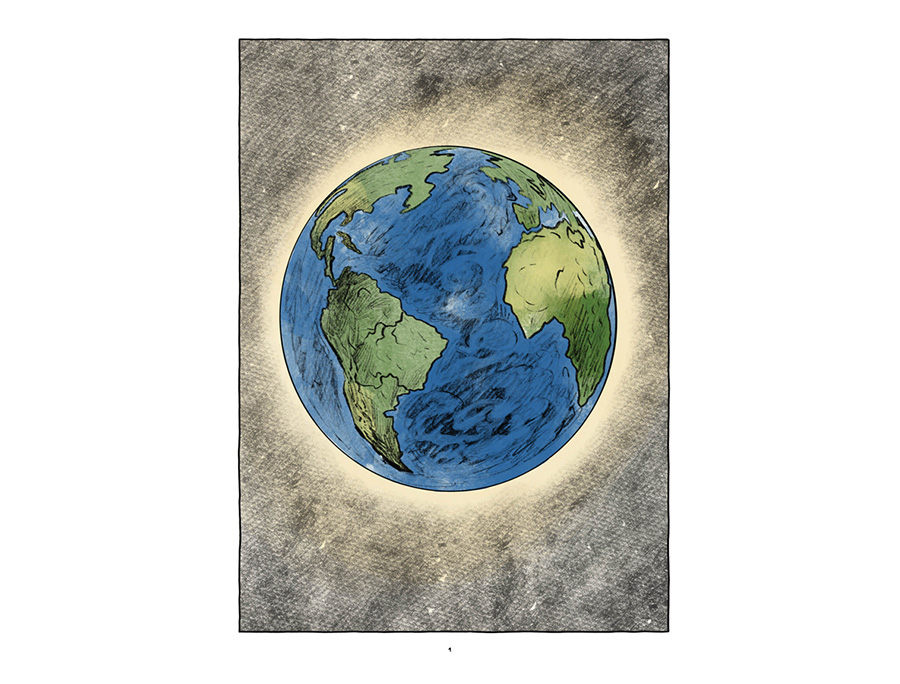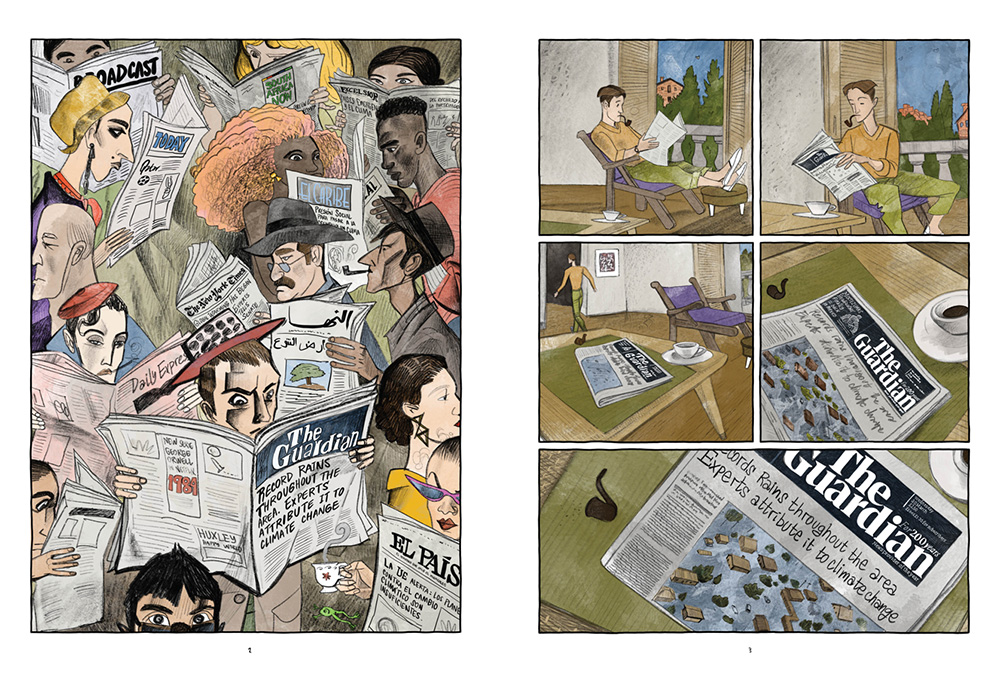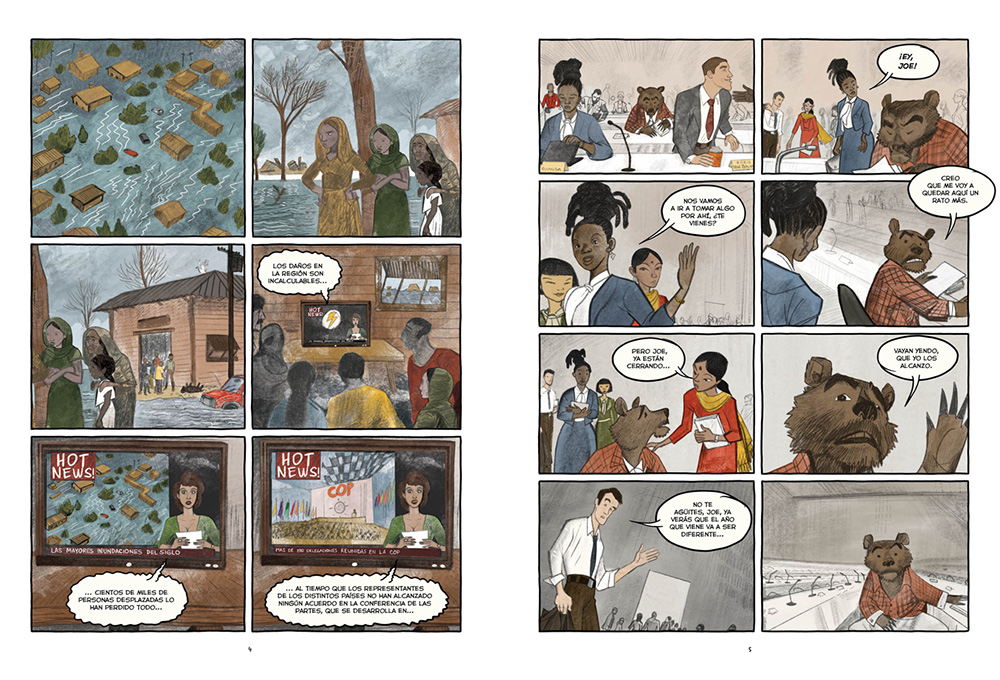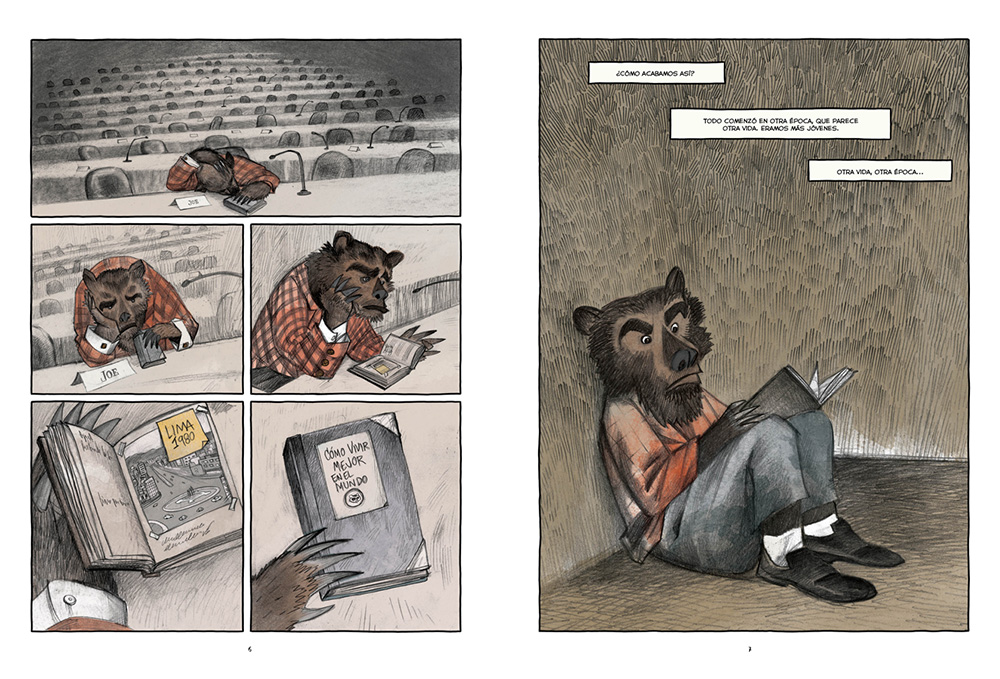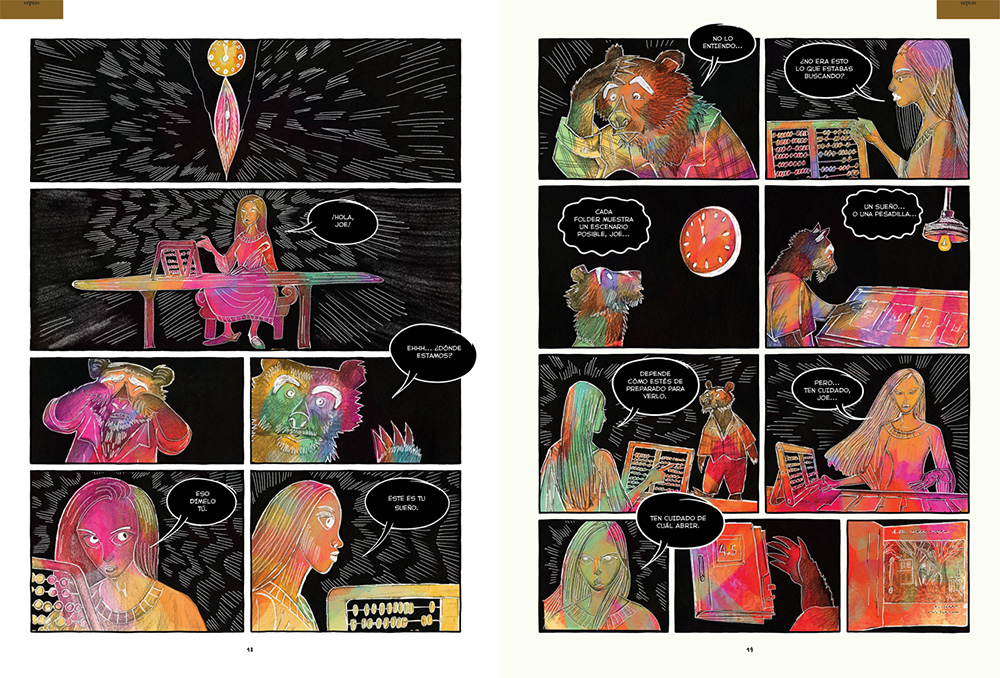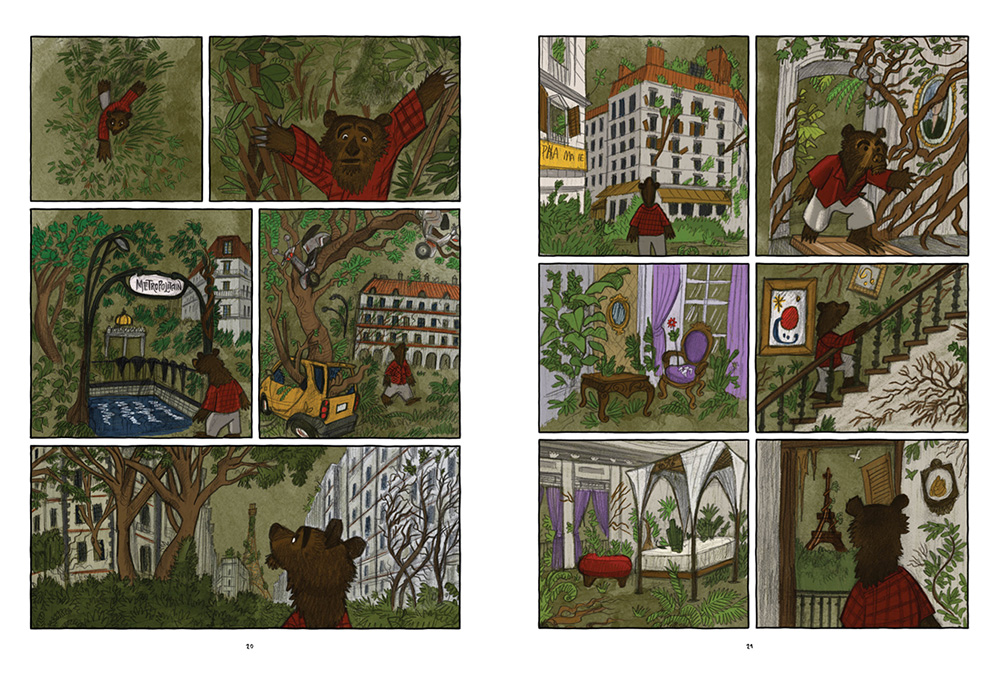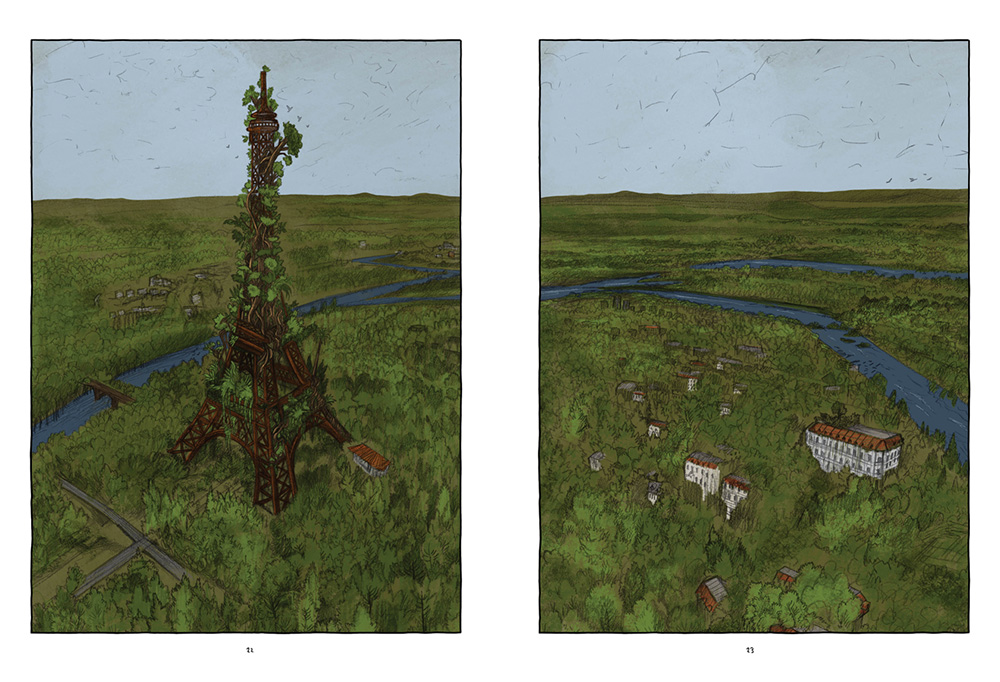The making of the Graphic Novel

In the spirit of “Learning by Doing”, we have been working on a graphic novel based on the findings that the different activities of the project have been producing and will produce in the future. The graphic novel will reflect/incorporate the different activities and outputs from the project.
We started with a series of interviews with members of the project to gather baseline information and generate a first script, sketching the overall content of the book.
An Andean bear, named Joe, is the protagonist of the story. The GN depicts the life of Jose, who, like so many people in the world, finds himself in need of migrating to improve his life conditions, but also to seek answers.
Through his voyages, Joe encounters many people and enrich his knowledge of himself, but also the way on he understands the Climate Crises, and by doing so, he shapes his way of dealing with it.
As mentioned above, findings and discussions from the Project serve as input to the GN. For instance, the Project has been developing narratives or description about the notion of “the good life” in several countries, in 2050. These discussions (fictional but based on actual information shaped by members of the project) are being incorporated into the narrative of the graphic novel.
The graphic novel was devised as an exercise to depict the different possible scenarios in the future. Each dependent on how well humanity adapts to the new environment and its consequences, as it seeks to mitigate the effects of global warming.
With the search for “the good life” as its axis, the exercise shows different scenarios. Dystopian, apocalyptic and Eutopian futures that allow us to generate awareness, but above all hope for a possible future in which we live better even having to adapt to the already inevitable changes that we are experiencing in the climate.
Joe, the main character, has several dreams that allow him to “live in” these different scenarios. The first apocalyptic dream, shows Joe in Paris (the city where the famous Paris agreement was reached in 2015), uninhabited and fully reclaimed by nature.

